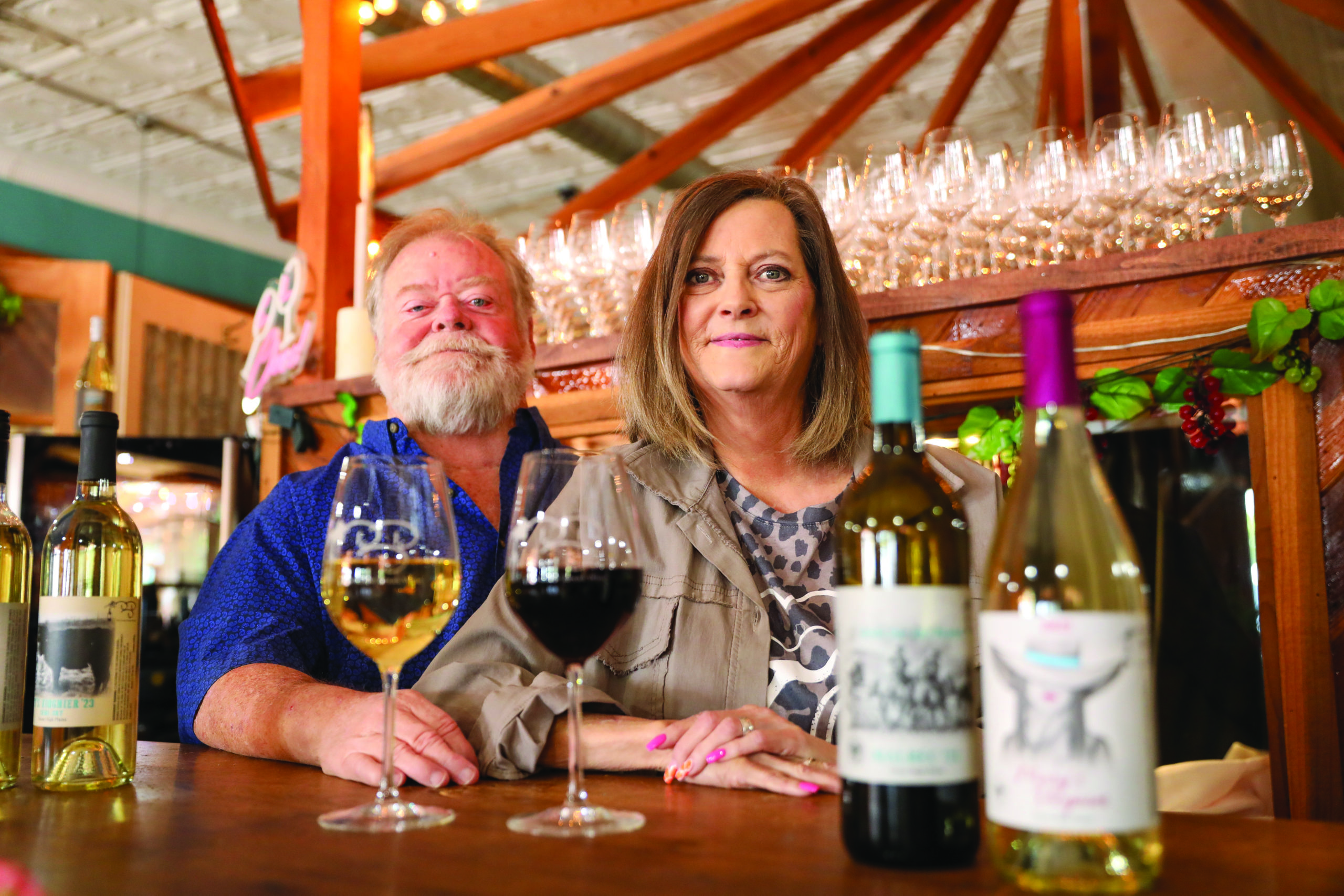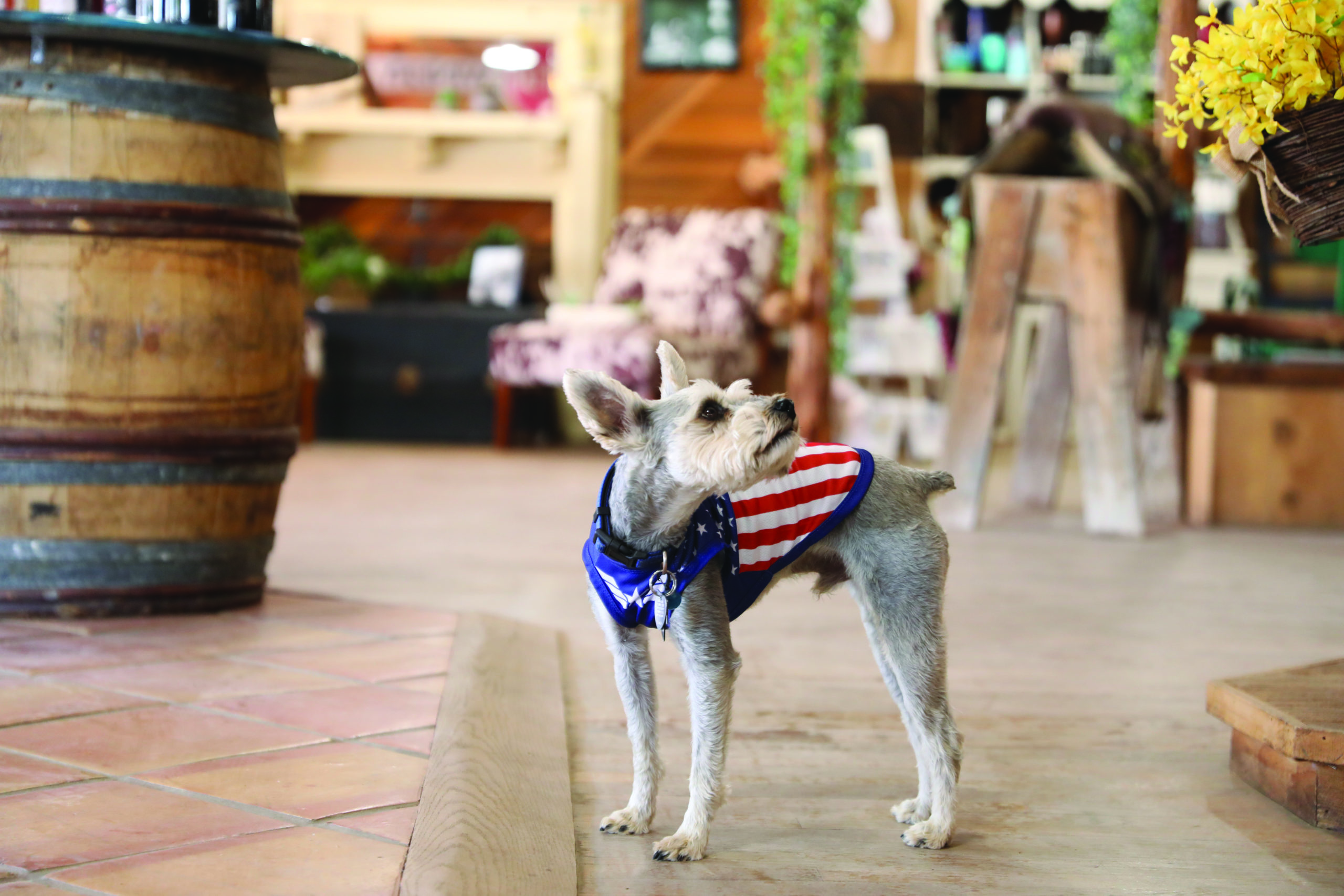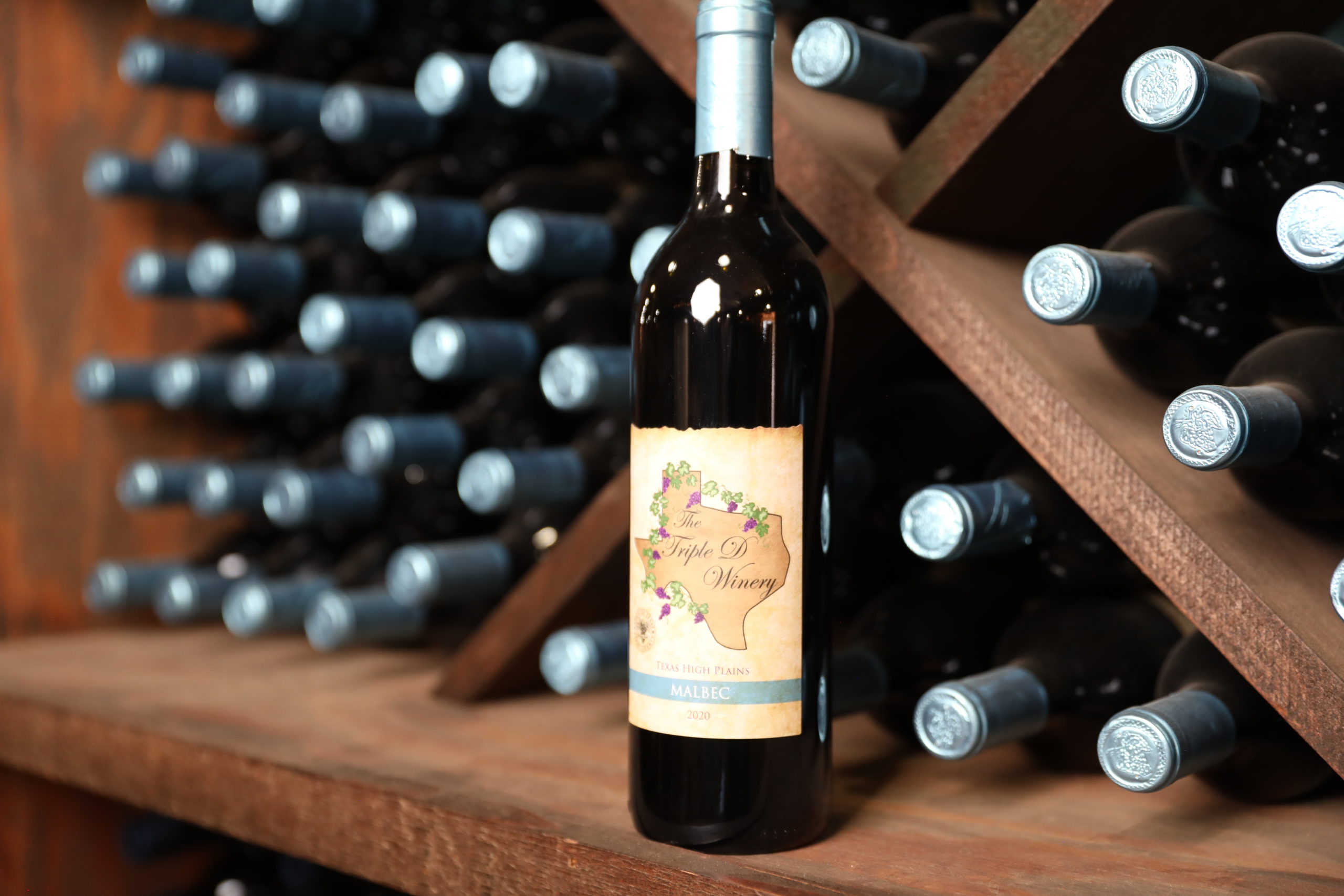 By Blair White | Photos by Jordan Albus
By Blair White | Photos by Jordan Albus
Sitting at the head of the long wooden family table in the rustic Triple D tasting room, Ty and Mary Wilmeth fondly recount their lifetime spent in West Texas agriculture. What began a century ago with Ty’s grandfather planting a single cottonseed in Tokio, Texas, grew into a legacy of a different sort: a 60-acre vineyard and shelves laden with bottles of wine crafted from the labor and love of a generational farming family.
Ty’s grandfather came out here and broke all of this land – the land he wanted his children to take care of, and now his grandson is farming it,” Mary said. “We’ve been doing it for almost 50 years.”
Ty began farming cotton in 1975 on the same land his grandfather broke out in 1924. By 1977, he was farming cotton on his own. Since then, he and his wife Mary have grown a variety of crops, including cotton, sorghum, peanuts, milo, wheat, watermelon, cucumbers, peppers, and now, 14 different varieties of grapes. One third of their cotton operation is irrigated, and the rest is dryland, stretching across Terry County and into Yoakum County.
“God has entrusted us with this land to care for,” Ty said. “There’s no other job out there like being a farmer.”
It wasn’t until 2014 that the Wilmeths became interested in growing grapes. After seeing others’ success with the crop, Ty and Mary began to conduct more research on the kind of effort required to start a vineyard. The Wilmeths planted their first vines in 2015. Now, they’re about to harvest their eighth grape crop.
“You asked if we eased into it – we don’t ease into anything,” Ty laughed.
“I never thought a stick would grow into such a beautiful vine,” Mary added.
In contrast to growing cotton, most of the expense of growing grapes comes with the initial planting of the vines and later, the labor that comes with hand-tending the plants. The grape growing season is also shorter, with the plants entering the bud break stage at the end of March and harvesting at the beginning of August. During the bud break stage, crop yield can also be determined and is almost guaranteed, barring any major weather events.
“It costs about $15,000 an acre to plant grapes, from the plant to irrigation, trestles, and other materials,” Ty explained.
“During cotton planting season, of course, we are already in the field, so we will go out and drive through the vineyard,” Mary said. “In the same way we keep an eye on the baby cotton, we keep an eye on the grapes. We can see our yield potential from the beginning.”
It took Ty and Mary two years to harvest their first grape crop. Initially, they were contracted to grow grape varieties for different wineries, and still do, but a few years into the business, they set out to process their own grapes to make their own wine. Working with a local Terry County winemaker, the Wilmeths’ grapes are pressed, fermented, bottled, and later sold exclusively from the Triple D Tasting Room in Brownfield, Texas.
“To start, when we are in the vineyard, we check the brix, which is the sugar content of the grapes,” Mary explained. “We also check the pH. We try to get all those factors as close to what the winery wants as possible. Some require 21 brix in their grapes, which are not as sweet. The majority like to have around 24. We tested a good, sweet watermelon, and it measures 14 to 16 brix. Table grapes are 18 brix. Strawberries are 12, and wine grapes are 24.”
One of the Wilmeths’ favorite pastimes is riding around the vineyard testing brix with their miniature Schnauzer/Yorkie mix, Zeus, a full-fledged Gewürztraminer expert.
“Zeus does like a Cabernet, but if you pour up some Gewürztraminer, he’ll drink it right out of the glass,” Ty said.
“Yes, we have a wino dog,” Mary chuckled. “He does keep the vineyard inspected, though.”

Zeus, the Gewürztraminer expert.
After the grapes are determined to contain the right number of brix, they are harvested and then moved to bins. Each four-by-four bin can hold 1,000 to 1,200 pounds of fruit. Later, the grapes are transferred to a refrigerated truck to slow down the natural fermentation process. The shipping process is quick, with each truckload reaching its destination within four to eight hours across the state of Texas.
“It’s interesting that one winery may purchase the same variety of grapes from the same vineyard or from several growers in the same area, and the grapes themselves, and the wine, will taste totally different,” Mary said. “There’s some cabernet grown on the state line by friends of ours in very shallow, caliche-type soil. Because of that, their cabernet wine tastes a bit like a bell pepper.”
Once the grapes reach their destination, they are pressed and left to sit in the skins to add more flavor and color. Mary said one of her favorite parts of the winemaking process is helping develop flavors unique to the Triple D brand. She’s honed this skill into one that has led them to win wine contest awards nationwide.
“We’ve won several awards at different wine competitions,” she said. “There’s two in San Francisco, several in Texas, including some at the major rodeos.”
“I’ve actually been asked to autograph a bottle,” Ty said. “It blew my mind. It’s cool to have someone come up to you, and they’re drinking wine made from your grapes.”
Patrons can stop by the Triple D tasting room in Brownfield for drinks and hors d’oeuvres, or travel to the vineyard to enjoy the view. Whether it’s growing cotton or grapes, the Wilmeths have dedicated their lives to agriculture. However, their journey of diversifying their operation hasn’t come without challenges.
“God has a plan, and it’s going to work out, even if you think it isn’t,” Ty said. “I’ve come up with this thought – there’s a difference between worrying about things and thinking about them. I’m always thinking about the farm – it doesn’t matter what we’re doing. Worrying is different.”
Ty went on to explain how a story from a friend once helped change his perspective on farming. The friend witnessed a wealthy employer stop and pick up a penny from a parking lot and study it. She asked him why he took the time to pick up the coin, and he replied that the engraving “In God We Trust” reminded him to cast off his worries, so every time he found a penny, he picked it up. Later, Ty said the very same thing happened to him.
“One day, I was on the highway south of the Tokio gin,” Ty said. “It was 108 degrees, I was stressed out, and the wind was blowing 40 miles an hour. I pulled over to the side of the road to check some things on my trailer. When I opened my door and looked down, a penny was embedded in the asphalt. I got my pocketknife, dug the penny out, and put it in my pocket while having this story in the back of my mind. I thought, ‘Okay, God, I won’t worry about it.’ I put the penny on the dashboard of my pickup, and whenever I worry, I rub the penny. After that, I have this sense of peace.”
Ty’s story is just one example of the kind of real-world faith it takes to bring a crop to harvest. Mary shared a similar reflection on their lifetime spent in the field.
“Sometimes you look back and say, well, that wasn’t a very fun time in my life,” Mary said. “I may not have liked it, but at the same time, I wouldn’t change it. I look back sometimes and think, I can’t believe we planted those sticks or that seed in the ground. What are we doing? But I wouldn’t change it. I’d still walk behind all those little plants and pray over each of them.”
 Expanding beyond cotton farming and into winemaking allows Ty and Mary to honor their heritage and cultivate a future as rich and resilient as each crop planted on their West Texas land. From cotton roots to vineyard rows, the Wilmeths have built a diversified farming operation rooted in tradition, innovation, and community, sure to last for generations to come.
Expanding beyond cotton farming and into winemaking allows Ty and Mary to honor their heritage and cultivate a future as rich and resilient as each crop planted on their West Texas land. From cotton roots to vineyard rows, the Wilmeths have built a diversified farming operation rooted in tradition, innovation, and community, sure to last for generations to come.


